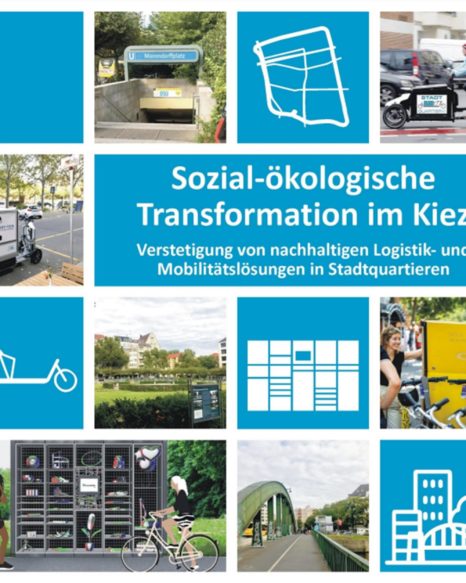How can urban spaces be designed to strengthen active mobility and the amenity quality of places? Julia Jarass talks about her experiences and insights for the Weltverbesserer-Podcast.
Commuting by bicycle or on foot is beneficial for health and wellbeing. However, cycling and walking alongside road traffic poses the risk of air pollution and noise exposure. The perceived exposure to air pollution and noise en route and the momentary sensory awareness in traffic has rarely been investigated. This study addresses this research gap. The aim was to examine cyclists’/pedestrians’ sensory awareness, perceived and measured exposure, and practices to reduce health risks and improve wellbeing en route.
According to the requirements of the Federal Climate Protection Act, emissions from the transport sector must be reduced to 95 million tonnes of CO2 equivalents per year by 2030, which corresponds to a reduction of 42 percent compared to 1990. This strong emissions reduction target can only be achieved through infrastructural changes and both technical and social innovations.
The Berlin Mobility Act (MobG BE) has raised great expectations for a rapid transformation of the capital into a people- and environmentally-friendly mobility space. This paper reviews progress in four areas of action.
This article uses quantitative and qualitative methods to investigate which objectively measurable emotional reactions occur during a walk, which correlations to spatial characteristics can be derived, and to what extent the physical reactions correspond to the subjective assessment of the test persons.
Cities play a major role in tackling the COVID-19 pandemic as many measures are adopted at the scale of cities and involve adjustments to the way urban areas operate.
Drawing from case studies across the globe, this book explores how the pandemic and the policies it has prompted have caused changes in the ways cities function.
The COVID-19 pandemic has drastically changed mobility behaviour. Many trips have been reduced due to the restrictions in everyday life, public transport has been shunned as a common means of transport, and in its place, there has been a shift to the private car as well as to walking and cycling. This article first analyses the developments and impacts of the pandemic on mobility. It then shows which new pathways transport policy and administration are taking to cope with the crisis.
The Berlin Mobility Act (MobG BE) has raised great expectations for a rapid transformation of the capital into a people- and environmentally-friendly mobility space. This paper reviews progress in four areas of action.
Im NaMo-Forschungskolloquium werden Forschungsarbeiten aus dem Bereich der sozialwissenschaftlichen Mobilitätsforschung vorgestellt und gemeinsam konstruktiv-kritisch diskutiert. Bei laufenden Forschungsarbeiten liegt der Schwerpunkt auf Fragen der geplanten theoretischen und methodischen Herangehensweise, sowie...
Expert:innenworkshop des Forschungs- und Praxisprojektes StadtQuartier 4.1 Zahlreiche Forschungsvorhaben, Modellprojekte und Reallabore widmen sich neuen Lösungen für eine nachhaltige Mobilitäts- und Logistikwende. Dazu zählt auch das BMBF-geförderte Forschungs- und...


